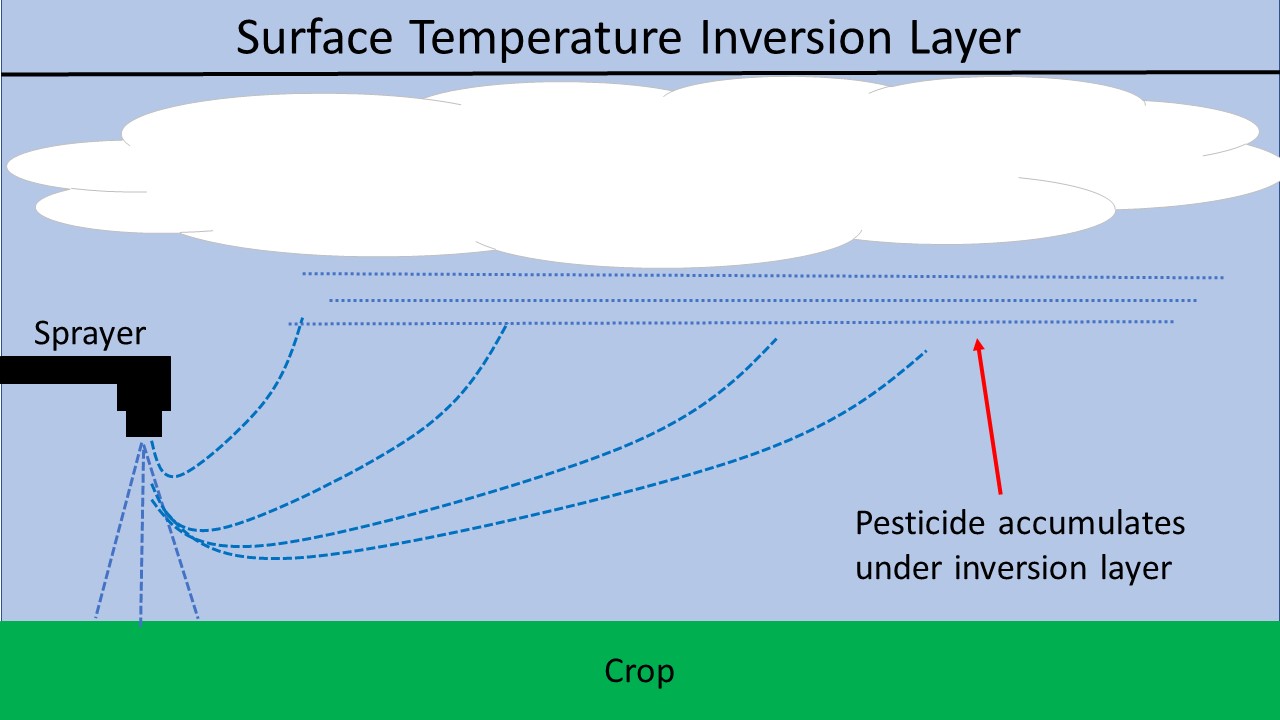Inversions Matter
Temperature inversions can affect:
- Air Quality - inversions trap atmospheric pollutants near the surface causing health concerns and strengthening odors
- Frost/Freeze - damage to early spring crops are associated with cold air pooling, farmers may invest in wind machines to promote air mixing (EnviroWeather article)
- Moisture - dew forms almost every time a temperature inversion occurs, which can lead to increased chance of plant disease formation in agriculture
- Pesticide Drift (see below)
- Sound - sound waves are amplified, traveling further distances away from the originating source and seeming louder
- Visibility - fog, smoke, and haze can become dense and impact transportation

Agricultural pesticides used to control weeds, diseases, and insects are also affected by temperature inversions. Applying pesticides during temperature inversions can result in pesticide drift, which reduces pesticide effectiveness and can harm nearby sensitive plants, pollinators, and people. When spray droplets are dispersed in this environment, the smallest drops may not make it to the ground and can end up floating for long distances before settling in an entirely different area, including some else's field (Figure 1). The next day the sun heats up the layer, mixes the pollutants, and causes off-target movement.
See the Temperature Inversions and Herbicide Drift webinar from the University of Missouri for additional information.